POLLINATOR WEEK
June 17-23, 2024
Public and land-grant universities across the nation champion pollinator health through their research, education, and Extension.

Pollinators support agriculture profitability
Bees, flies, moths and other pollinators are essential to the environment. Pollinators improve the quality and quantity of farmers’ crop yields, which adds an estimated $18 billion in crop production revenue annually. Pollinators also support healthy ecosystems needed for clean air, stable soils and diverse wildlife. However, both wild and domesticated pollinators are at risk, most notably many wild bees like bumble bees, which are in serious decline due to climate change, pesticides, pathogens and land use change. Land-grant universities across the nation are working together to improve habitats and protect pollinators.
MULTISTATE RESEARCH IMPACTS
Multistate research projects are helping protect important pollinators that contribute to ecosystem health and a sustainable food supply. Examples of projects include measuring and mitigating agrichemical impacts on pollinators; identifying factors that affect pollinator preferences and their resistance to pathogen infection; and selective breeding of honeybees with favorable characteristics for mite control. Hatch Multistate Research Fund projects are supported in part by the USDA NIFA and led by collaborating State Agricultural Experiment Stations at land-grant universities.


MULTISTATE RESEARCH IMPACTS
Multistate research projects are helping protect important pollinators that contribute to ecosystem health and a sustainable food supply. Examples of projects include measuring and mitigating agrichemical impacts on pollinators; identifying factors that affect pollinator preferences and their resistance to pathogen infection; and selective breeding of honeybees with favorable characteristics for mite control. Hatch Multistate Research Fund projects are supported in part by the USDA NIFA and led by collaborating State Agricultural Experiment Stations at land-grant universities.
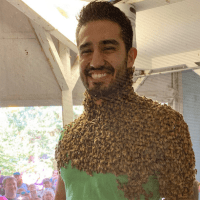
Photo courtesy of University of Minnesota Extension.
UNIVERSITY OF MINNESOTA
Q and A with Joshua Muñoz: veteran, teacher, beekeeper and honey ambassador. Muñoz compares beekeeping to equine therapy for its benefits for veteran health and transitioning back to the civilian world.
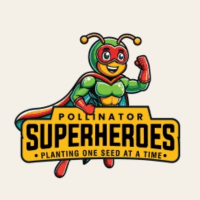
PRAIRIE VIEW A&M UNIVERSITY
The new "Pollinator Superheroes" animated series provides a fun and innovative way to educate youth about the importance of pollinators.
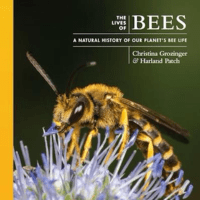
PENN STATE
The new book offers a comprehensive look at the intricate world of bees — from their physiology and behavior to their role in crop production and ecological food webs — and how these complex creatures evolved.
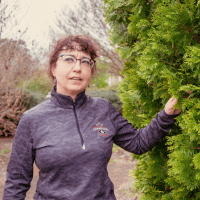
Photo courtesy of Lavi Del Carmen Astacio, University of Georgia.
THE UNIVERSITY OF GEORGIA
In this popular College of Agricultural and Environmental Sciences online course, students learn how to identify different pollinators and their habitats along with strategies to attract and protect pollinators through plant selection and citizen involvement.

Photo courtesy of Alina (Harris) Cypher / Sideman Lab, University of New Hampshire.
RESEARCHERS EXAMINE USING FLOWERING PLANTS TO ATTRACT HOVER FLIES FOR PEST CONTROL
UNIVERSITY OF NEW HAMPSHIRE
A new study found that the larvae of beneficial pollinators, like syrphid flies, are predatory and can serve as a biological control of common crop pests, such as aphids.
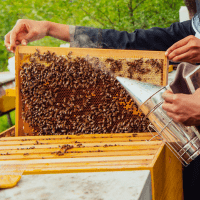
CENTRAL STATE UNIVERSITY
The Central State University Bee Lab offers opportunities for undergraduate students to conduct their own research on honeybee genetics and behaviors that influence pollinator health.

WELCOMING THE MONARCHS
UNIVERSITY OF ARKANSAS
Monarch butterflies have made their return to the Southern U.S. and will be continuing their travels north. Here's how home gardeners can attract and aid these regal pollinators.
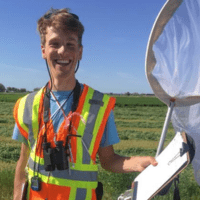
Photo courtesy of Diane Debinski, Montana State University.
MONTANA STATE UNIVERSITY
This recent study captured how, when, and under what conditions roadside habitats may benefit or harm pollinators, recommending practical questions that managers and policymakers should consider when planning pollinator-focused roadside management.
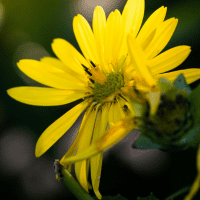
LINCOLN UNIVERSITY
Many Missouri native edibles consumed in the past by Native Americans are gaining popularity but knowledge on how to grow them, what to harvest and preparation is limited or forgotten. The Specialty Crops Program promotes nutritious plants that provide both food security for underserved populations and ecological benefits for pollinators.
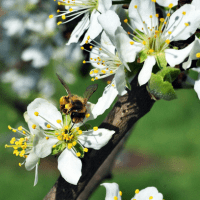
MICHIGAN STATE UNIVERSITY
As bees come into fruit farms during bloom, growers can protect pollinators and minimize pesticide exposure.
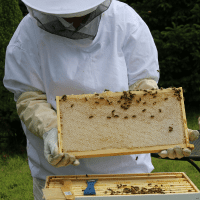
UNIVERSITY OF GUAM
This study provides essential information for local beekeepers about the variety and type of floral sources honeybees prefer.
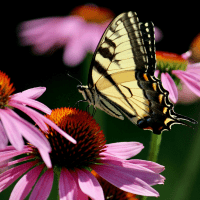
THE UNIVERSITY OF MAINE
The University of Maine received a designation from the national Bee City USA organization that establishes it as a Bee Campus USA, opening up opportunities for more native pollinator gardens on campus.
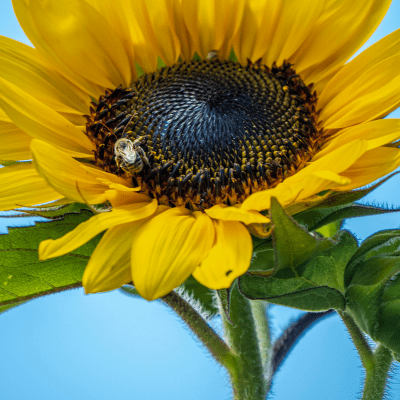
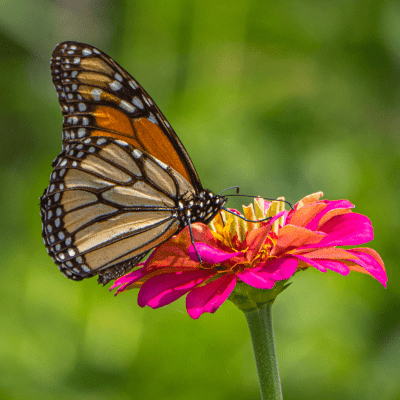

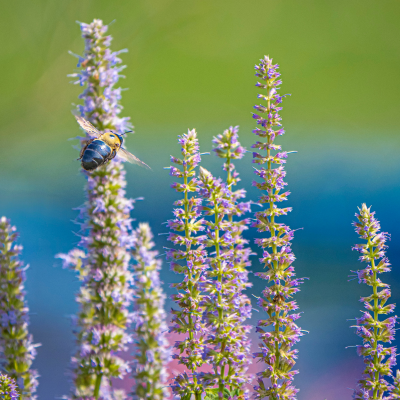

Photo courtesy of University of Minnesota Extension.
A HONEY OF A CAREER
UNIVERSITY OF MINNESOTA
Q and A with Joshua Muñoz: veteran, teacher, beekeeper and honey ambassador. Muñoz compares beekeeping to equine therapy for its benefits for veteran health and transitioning back to the civilian world.

CELEBRATING CULTURE & POLLINATORS: ANIMATED SERIES HONORS NATIVE LANGUAGES, PROVIDES SCIENCE EDUCATION
PRAIRIE VIEW A&M UNIVERSITY
The new "Pollinator Superheroes" animated series provides a fun and innovative way to educate youth about the importance of pollinators.

PENN STATE
The new book offers a comprehensive look at the intricate world of bees — from their physiology and behavior to their role in crop production and ecological food webs — and how these complex creatures evolved.

Photo courtesy of Lavi Del Carmen Astacio, University of Georgia.
THE UNIVERSITY OF GEORGIA
In this popular College of Agricultural and Environmental Sciences online course, students learn how to identify different pollinators and their habitats along with strategies to attract and protect pollinators through plant selection and citizen involvement.

Photo courtesy of Alina (Harris) Cypher / Sideman Lab, University of New Hampshire.
RESEARCHERS EXAMINE USING FLOWERING PLANTS TO ATTRACT HOVER FLIES FOR PEST CONTROL
UNIVERSITY OF NEW HAMPSHIRE
A new study found that the larvae of beneficial pollinators, like syrphid flies, are predatory and can serve as a biological control of common crop pests, such as aphids.

SEEKING ANSWERS IN THE CSU BEE LAB
CENTRAL STATE UNIVERSITY
The Central State University Bee Lab offers opportunities for undergraduate students to conduct their own research on honeybee genetics and behaviors that influence pollinator health.

WELCOMING THE MONARCHS
UNIVERSITY OF ARKANSAS
Monarch butterflies have made their return to the Southern U.S. and will be continuing their travels north. Here's how home gardeners can attract and aid these regal pollinators.

Photo courtesy of Diane Debinski, Montana State University.
ROADSIDE HABITAT: BOON OR BANE FOR POLLINATING INSECTS?
MONTANA STATE UNIVERSITY
This recent study captured how, when, and under what conditions roadside habitats may benefit or harm pollinators, recommending practical questions that managers and policymakers should consider when planning pollinator-focused roadside management.

COOPERATIVE EXTENSION SPECIALTY CROPS PROGRAM
LINCOLN UNIVERSITY
Many Missouri native edibles consumed in the past by Native Americans are gaining popularity but knowledge on how to grow them, what to harvest and preparation is limited or forgotten. The Specialty Crops Program promotes nutritious plants that provide both food security for underserved populations and ecological benefits for pollinators.

POLLINATOR STEWARDSHIP DURING FRUIT CROP BLOOM
MICHIGAN STATE UNIVERSITY
As bees come into fruit farms during bloom, growers can protect pollinators and minimize pesticide exposure.

POLLEN DNA SAMPLING REVEALS THE FOOD SOURCES OF GUAM HONEYBEES
UNIVERSITY OF GUAM
This study provides essential information for local beekeepers about the variety and type of floral sources honeybees prefer.

BLACK BEAR BEEKEEPERS JOIN NATIONAL FIGHT TO PRESERVE POLLINATORS
THE UNIVERSITY OF MAINE
The University of Maine received a designation from the national Bee City USA organization that establishes it as a Bee Campus USA, opening up opportunities for more native pollinator gardens on campus.




